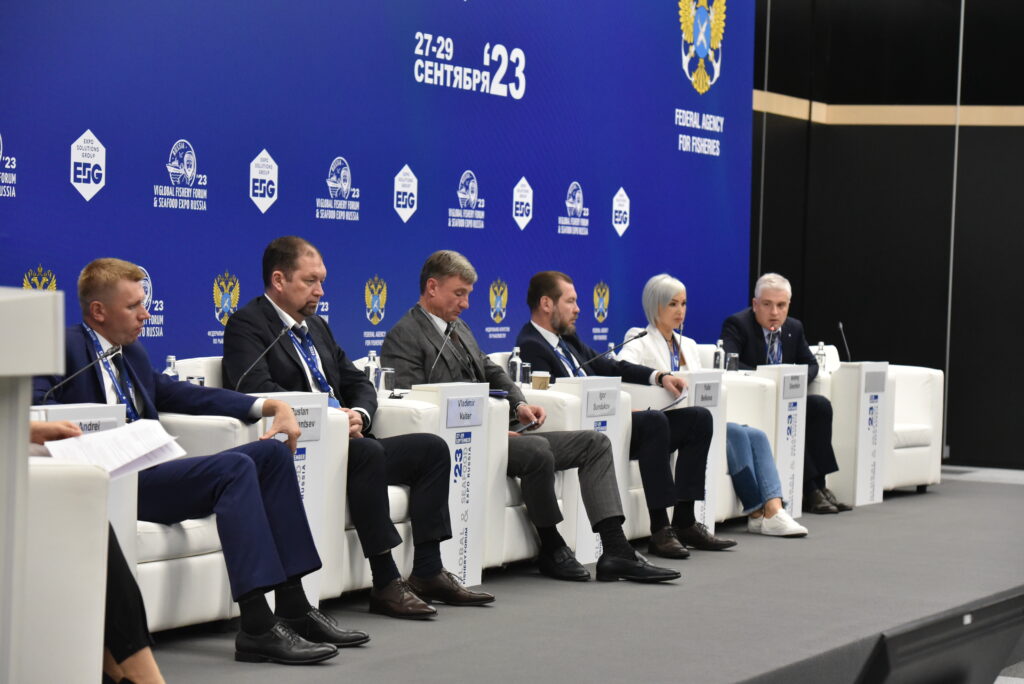The country is still short of refrigeration capacity for fish transshipment but steps the government and the Federal Agency for Fisheries are taking to mobilize private businesses to this segment will soon reduce the shortage significantly. This burning issue was the focal point of the ‘Fish Infrastructure’ roundtable at the VI Global Fishery Forum and Seafood Expo Russia held in St. Petersburg on 27–29 September 2023.
Andrei Mikhalevich, Head of the Economy and Investment Department at the Federal Agency for Fisheries, stated that the refrigeration capacity shortage is now estimated at almost 80 thousand tonnes in the Far East and about 50 thousand tonnes in Murmansk.
“In 2021, the Far East was overloaded owing to pandemic restrictions in China and a decision was made within a month to subsidize fish (pollock) transportation from the Far East to western regions by rail. This measure helped relieve the stress. We have now formulated proposals for subsidizing other fish species in addition to pollock, such as herring, sardine and pink salmon,” said Andrei Mikhalevich.
This measure is clearly inadequate, so the second investment quota stage and crab auctions with investment obligations will include building several refrigerators: three big ones, each holding 25 thousand tonnes, and one small one with a 5 thousand tonne capacity. This will require a substantial investment of RUB 80 billion but this will offset the peak load during the fishing season. In addition, container sites to hold 400 containers will be built as essential logistics infrastructure.
Refrigerated vessels are also on the list of investment projects at the investment quota second stage – their fleet is worn out, too. At the same time, fish shipments are expected to increase both via the Northern Sea Route and to Asia-Pacific countries. These new solutions will help align a more effective fish logistics chain.
The first auction to sell crab quotas with investment obligations including the first project, refrigerator construction, will start in the second half of October 2023. The maximum project duration is five years but it is more than likely that fishermen will cope in just two or three years.
Two auctions are planned for the Northern Basin and large-scale projects will be launched in 2024–2026. The North specifically lacks transshipment hubs but factories built on investment quota terms have their own refrigerators.
Ruslan Rumyantsev, Acting General Director of Federal State Unitary Enterprise ‘Natsrybresurs’, said that efforts in the Far East prioritize the port of Vladivostok as the main hub for fish product transshipment. However, two additional ports are being considered in Kamchatka and Sakhalin.
“An inventory of hydraulic engineering installations is currently under way but we already have blueprints for development financing. The government has recently regained the Murmansk fishing port and, now, together with the regional government, we are looking into the best ways to incorporate it in a single fish supply network to use its fishing berths, which were previously employed for coal transfer, for fish transshipment purposes,” Ruslan Rumyantsev said.

